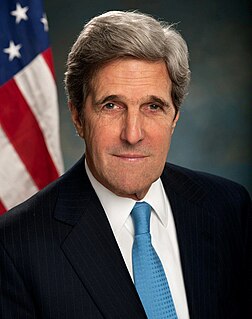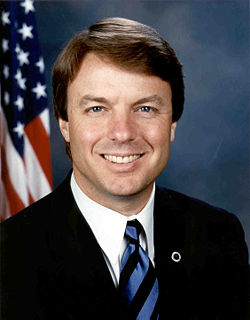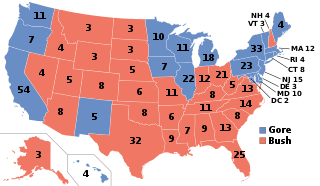
The 2000 United States presidential election was the 54th quadrennial presidential election. It was held on Tuesday, November 7, 2000. Republican candidate George W. Bush, the Governor of Texas and the eldest son of the 41st President George H. W. Bush, won the election by defeating Democratic nominee Al Gore, the incumbent vice president. It was the fourth of five presidential elections in which the winning candidate lost the popular vote, and is considered one of the closest elections in US history.

The 1992 Democratic presidential primaries were the selection process by which voters of the Democratic Party chose its nominee for President of the United States in the 1992 U.S. presidential election. Arkansas Governor Bill Clinton was selected as the nominee through a series of primary elections and caucuses culminating in the 1992 Democratic National Convention held from July 13 to July 16, 1992, in New York City.

The 2000 Democratic National Convention was a quadrennial presidential nominating convention for the Democratic Party. The convention nominated Vice President Al Gore for President and Senator Joe Lieberman from Connecticut for Vice President. The convention was held at the Staples Center in Los Angeles, California from August 14 to August 17, 2000. Gore accepted the presidential nomination on August 17, the final night of the convention. This was the second Democratic National Convention hosted by Los Angeles, the first being in 1960.
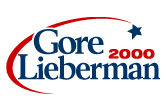
The 2000 presidential campaign of Al Gore, the 45th Vice President of the United States under President Bill Clinton, began when he announced his candidacy for the presidency of the United States in Carthage, Tennessee on June 16, 1999. Gore became the Democratic nominee for the 2000 presidential election on August 17, 2000. Victory in the presidential election would have made Gore the first president to not be born in the 50 states, as he was born in the District of Columbia, as well as the first Democrat since the Civil War to succeed another Democrat to the Presidency by election in his own right.

The 1992 presidential campaign of Bill Clinton, then Governor of Arkansas, was announced on October 3, 1991 in Little Rock, Arkansas. After winning a majority of delegates in the Democratic primaries of 1992, the campaign announced that then-junior Senator from Tennessee, Al Gore, would be Clinton's running mate. The Clinton-Gore ticket went on to defeat Republican incumbent President George H. W. Bush and Vice President Dan Quayle in the presidential election on November 3, 1992, and took office as the 42nd President and 45th Vice President, respectively, on January 20, 1993.

The 2004 United States presidential election in Connecticut took place on November 2, 2004, and was part of the 2004 United States presidential election. Voters chose 7 representatives, or electors to the Electoral College, who voted for president and vice president.

The 2004 United States presidential election in South Carolina took place on November 2, 2004, as part of the 2004 United States presidential election which took place throughout all 50 states and D.C. Voters chose eight representatives, or electors to the Electoral College, who voted for president and vice president.

This article lists those who were potential candidates for the Republican nomination for Vice President of the United States in the 2008 election. On March 4, 2008, Senator John McCain of Arizona won a majority of pledged delegates for the Republican nomination for President of the United States, and became the presumptive nominee.

The 2000 Democratic presidential primaries were the selection process by which voters of the Democratic Party chose its nominee for President of the United States in the 2000 U.S. presidential election. Incumbent Vice President Al Gore was selected as the nominee through a series of primary elections and caucuses culminating in the 2000 Democratic National Convention held from August 14 to 17, 2000, in Los Angeles, California, but he went on to lose the Electoral College in the general election against Governor George W. Bush held on November 7 of that year, despite winning the popular vote by 0.5%.

The 2004 presidential campaign of Bob Graham, senior United States Senator from Florida, began on February 27, 2003 when he filed papers to form an exploratory committee, after delaying his intent to announce on February 3rd due to having heart surgery on January 31. On May 6th, he formally announced his entering into the race for President of the United States in the 2004 election on the Democratic ticket.

The 2000 United States presidential election in California took place on November 7, 2000, as part of the wider United States presidential election of 2000. California was won by the Democratic ticket of Vice President Al Gore of Tennessee and Senator Joe Lieberman of Connecticut by 11.8 percentage points over the Republican ticket of Texas Governor George W. Bush and former U.S. Secretary of Defense Dick Cheney of Wyoming.

The 2000 United States presidential election in Connecticut took place on November 7, 2000, and was part of the 2000 United States presidential election. Voters chose 8 representatives, or electors to the Electoral College, who voted for president and vice president.

The 2000 United States Senate election in Connecticut took place on November 7, 2000 in conjunction with the 2000 U.S. presidential election, other elections to the United States Senate in other states, as well as elections to the United States House of Representatives and various state and local elections. Incumbent Democratic U.S. Senator Joe Lieberman won re-election to a third term. While running for re-election, he was also Al Gore's running mate in the 2000 presidential campaign. With Gore losing the presidency to George W. Bush, Lieberman returned to the Senate and remained there for another 12 years, when he retired. Had the Gore-Lieberman ticket won, Lieberman would have become U.S. Vice President and forced to resign his Senate seat, which would have led to a 2002 special election. It would also have led Republican Governor John G. Rowland to temporarily appoint an interim replacement.

This article lists those who were potential candidates for the Republican nomination for Vice President of the United States in the 2000 election. On March 7, 2000, Governor George W. Bush of Texas won a majority of pledged delegates for the Republican nomination for President of the United States, and became the presumptive nominee.

This article lists those who were potential candidates for the Democratic nomination for Vice President of the United States in the 1992 election. Arkansas Governor Bill Clinton won the 1992 Democratic nomination for President of the United States, and chose Tennessee Senator Albert Gore, Jr. as his running mate on July 9, 1992. Clinton considered roughly forty different candidates for vice president, including those who did not hold elective office, but Clinton ultimately chose Gore, a two-term Senator who had previously run for president in 1988. Former Assistant Secretary of State Warren Christopher led Clinton's vice presidential selection team. In making the selection, Clinton emphasized Gore's experience with foreign policy and environmental issues. Clinton's choice of a fellow young southern centrist defied conventional wisdom, but the choice of Gore was well-received, and Gore made an effective surrogate on the campaign trail. The Clinton-Gore ticket ultimately defeated the Republican Bush-Quayle ticket and the independent Perot-Stockdale ticket, and the Clinton-Gore duo became the youngest ticket in history to win a presidential election.

This article lists those who were potential candidates for the Democratic nomination for Vice President of the United States in the 1988 election. Massachusetts Governor Michael Dukakis won the 1988 Democratic nomination for President of the United States, and chose Texas Senator Lloyd Bentsen as his running mate. Dukakis chose Bentsen in order to appeal to Southerners and in hopes of carrying Bentsen's home state of Texas. The choice of Bentsen caused some backlash from Jesse Jackson, who had wanted to be chosen as the vice presidential nominee, and progressives such as Ralph Nader. Paul Brountas, a longtime Dukakis aide, led the search for Dukakis's running mate. The Dukakis-Bentsen ticket would lose to the Bush-Quayle ticket in the general election. Coincidental to the presidential election, Bentsen won re-election as senator.

This article lists those who were potential candidates for the Republican nomination for Vice President of the United States in the 1988 election. Incumbent Vice President George H.W. Bush won the 1988 Republican nomination for President of the United States, and chose Indiana Senator Dan Quayle as his running mate. The selection of Quayle surprised many of Bush's closest advisers, who had expected Bush to pick a more well-known running mate. However, Bush adviser Roger Ailes helped convince Bush that Quayle would be able to effectively attack the Democratic presidential nominee, Michael Dukakis. Bush also liked Quayle's youth and felt that Quayle would make for a loyal vice president. The Bush-Quayle ticket ultimately defeated the Dukakis-Bentsen ticket in the 1988 election.
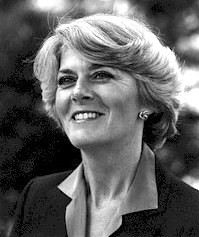
This article lists those who were potential candidates for the Democratic nomination for Vice President of the United States in the 1984 election. Former Vice President Walter Mondale won the 1984 Democratic nomination for President of the United States, and chose New York Representative Geraldine Ferraro as his running mate. Ferraro was the first woman to be a part of a national ticket for a major party. Mondale chose Ferraro in hopes of energizing the base and winning the votes of women, but also because he viewed her as a solid legislator who had won the approval of Speaker Tip O'Neill. John R. Reilly, an attorney and a senior adviser to Mondale, managed the search for a running mate. Mondale seriously considered his major rival for the 1984 presidential nomination, Senator Gary Hart, but Mondale refused to consider a second rival, Jesse Jackson, on the grounds that the differences between their policies were too great. The Mondale-Ferraro ticket ultimately lost to the Reagan-Bush ticket.
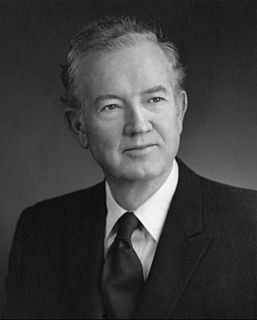
This article lists those who were potential candidates for the Democratic nomination for Vice President of the United States in the 1952 election. After winning the presidential nomination on the third ballot of the 1952 Democratic National Convention, Illinois Governor Adlai Stevenson consulted with Democratic Party leaders such as President Harry S. Truman and Speaker Sam Rayburn. Stevenson chose Alabama Senator John Sparkman, a Southern centrist, as his running mate. Sparkman won the vice presidential nomination on the first ballot as no serious rival tried to displace Stevenson's choice. However, many Northerners were not enthused with the choice of Sparkman due to Sparkman's stance on civil rights. During the 1952 convention, Sparkman, who had supported Senator Richard Russell for president, played a part in watering down the party's platform on civil rights. New York Representative Adam Clayton Powell Jr. and others walked out of the convention after the choice of Sparkman was announced. The Democratic ticket lost the 1952 election to the Republican ticket of Dwight D. Eisenhower and Richard Nixon.




